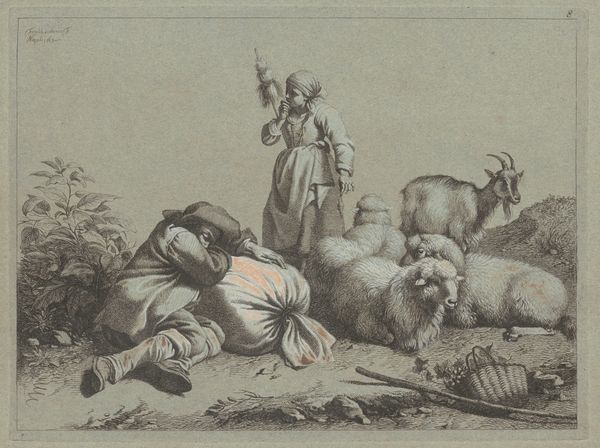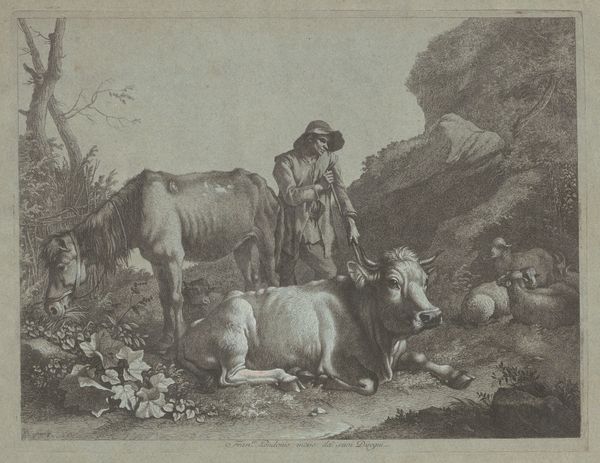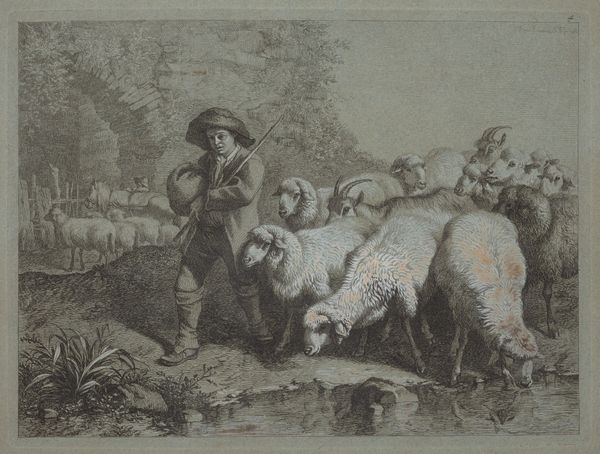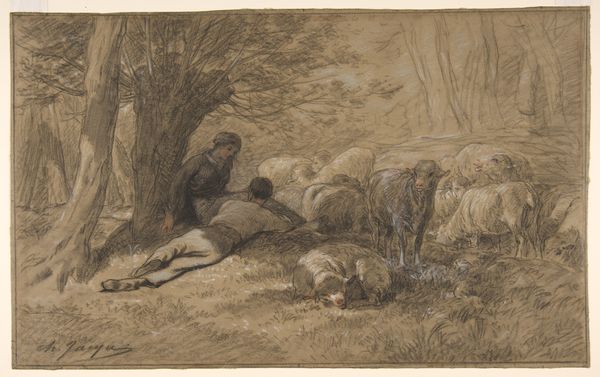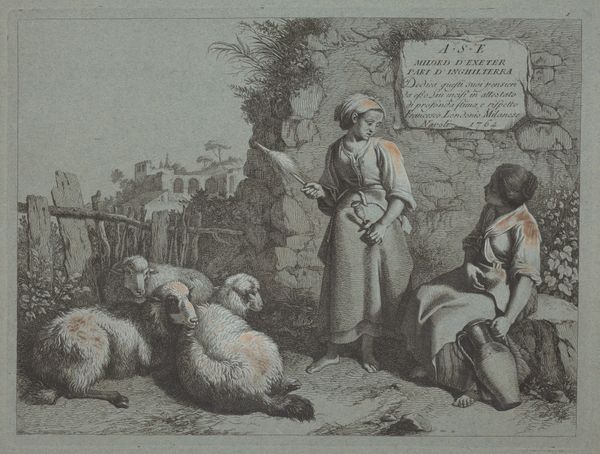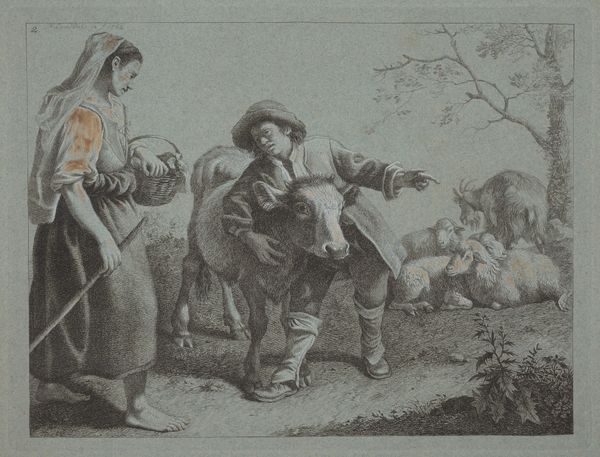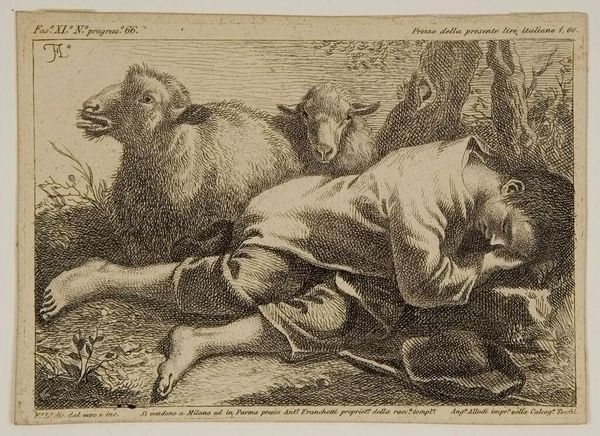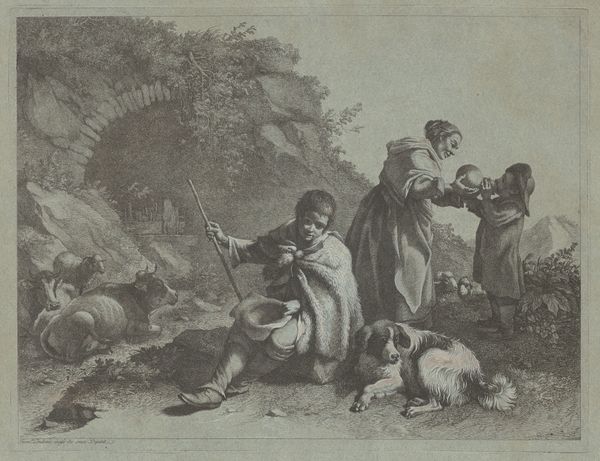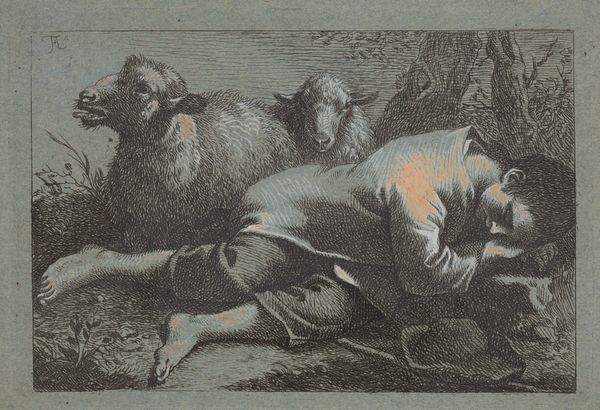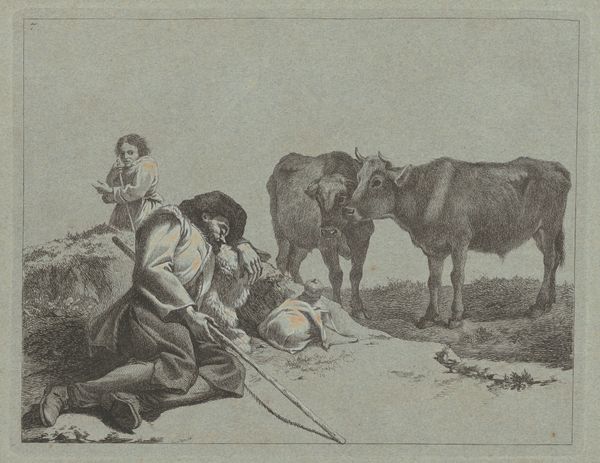
print, etching
# print
#
etching
#
landscape
#
genre-painting
#
rococo
Dimensions: plate: 19 x 14.5 cm (7 1/2 x 5 11/16 in.) sheet: 28.7 x 41.2 cm (11 5/16 x 16 1/4 in.)
Copyright: National Gallery of Art: CC0 1.0
Curator: Right, let’s have a look at this rather curious piece by Francesco Londonio: an etching from 1763 entitled, rather bluntly, "Peasant Teasing a Sleeping Girl with a Twig." Editor: It strikes me immediately as… uncomfortable. The fellow looming over her, the twig poised – it’s playful, ostensibly, but carries a creepy undercurrent. There's a vulnerability there. And I find myself questioning whose gaze we are adopting. Curator: Yes, that tension is palpable. Londonio, working within a Rococo style, often played with genre scenes—little slices of peasant life. But you're right, there's a disquiet here, a subtle imbalance of power being expressed. The print itself is a fascinating object – you can almost feel the pressure of the etching tool on the plate. Look at the landscape rendered with such delicacy, those are swift decisive marks! How was the etching printed? Editor: Good question! Given the period, the press itself would’ve been relatively simple, powered by muscle. We see the lineage, really, of mass production just beginning to take shape here—each print pulled contributing to a wider distribution of this scene and Londonio’s commentary— or lack thereof as far as direct statements – of his world view on work, play, and social interactions. These etchings are produced in multiples, destined for parlors where they are looked at closely or dismissed and forgotten... Curator: The choice of the word ‘teasing’, even in the title, does feel a bit loaded, don't you think? There's that quiet bowl beside the satchel that hint toward daily routines, of life, and labor, which could have some kind of context we are perhaps forgetting when simply passing through this image... Editor: Precisely! And it challenges our neat categories of ‘high’ art and ‘low’ craft. Someone had to grind the pigments, prepare the paper, and operate the press. Those labors are as present as the ‘artist’s’ touch. They define, refine, enable it. These class-based themes become incredibly loaded during that specific time frame... Curator: Indeed, it gives us a lot to ponder. Ultimately, I think this rather unsettling image reflects not just the pastoral aesthetics of the Rococo, but the era's nuanced and often uncomfortable social dynamics that underlie that "beautiful style." Editor: Absolutely. When looking beyond the artist we are ultimately looking to the larger ecosystem, it isn't so black and white in its interpretation, like everything, art history gets its color by how and where one is coming from!
Comments
No comments
Be the first to comment and join the conversation on the ultimate creative platform.
